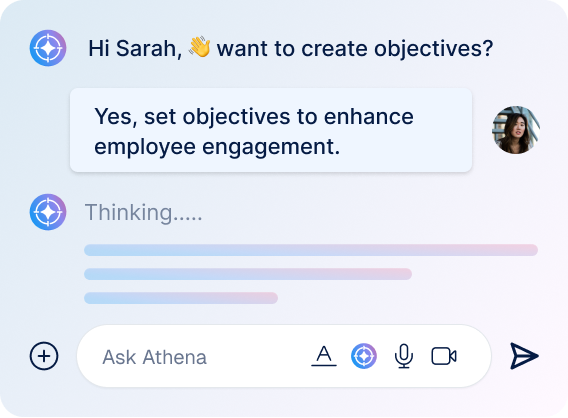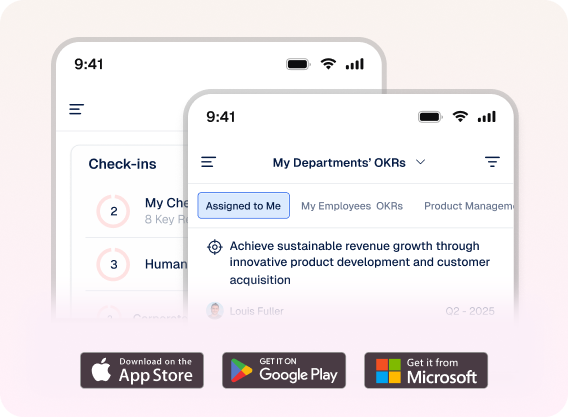Introduction
As organizations strive for excellence, performance management remains critical to success. However, many CHROs face significant challenges in effectively managing performance despite its importance.
Here are the top 5 issues plaguing performance management and worrying CHROs
When people are financially invested, they want a return. When people are emotionally invested, they want to contribute
1. Misalignment Between Employee Goals and Company Priorities
Many organizations struggle to align employee goals with company priorities. This misalignment leads to:
- Lack of focus on key priorities
- Inefficient resource allocation
- Inadequate measurement of progress
70% of employees say they’re unclear about their company’s goals and objectives (Source: Gallup, “State of the American Workplace” report, 2020). To overcome this, CHROs could implement Objective and Key Results (OKRs) frameworks, ensuring clear goal-setting and regular progress tracking. Even if they don’t implement OKRs, they could set guidelines for effective goal-setting aligned with company priorities. Another critical issue that ties into performance misalignment is ineffective feedback, which we explore next.
2. Ineffective Feedback and Coaching
According to a Gallup poll- “80% of employees who say they have received meaningful feedback in the past week are fully engaged”.Traditional performance management often focuses on annual reviews, neglecting regular feedback and coaching.
This results in:
- Disengaged employees
- Skill gaps and development stagnation
- Inadequate performance improvement
CHROs should prioritize continuous feedback, leverage technology, and train managers to provide constructive coaching. Building on the challenges of ineffective feedback, another significant concern that impacts performance management is the presence of biases in evaluations, which we will discuss next.

3. Bias and Subjectivity in Performance Evaluations
Performance evaluations are often plagued by bias and subjectivity, leading to:
- Unfair treatment of employees
- Lack of transparency
- Decreased trust in leadership
- Inaccurate assessments of employee performance
- Ineffective development plans
Are you looking to overcome these performance management challenges?
Types of Biases in Performance Evaluations
- Confirmation Bias: Tendency to focus on information that confirms pre-existing opinions or expectations.
- Halo Effect: Overemphasizing one positive trait or achievement, influencing overall evaluation.
- Recency Effect: Overemphasizing recent events or performance, ignoring overall accomplishments.
- Affinity Bias: Favoring employees from the same demographic or social group.
- Leniency Error: Tendency to give overly positive evaluations due to personal relationships or sympathy.
- Central Tendency Error: Clustering ratings around the middle or average, avoiding extreme evaluations.
- Similarity Bias: Favoring employees with similar characteristics, background, or experiences.
- Anchor Bias: Relying too heavily on initial impressions or past performance.
Example: A manager gives a low rating to an employee they’ve previously perceived as underperforming, ignoring recent improvements.
Example: An employee’s exceptional presentation skills lead the manager to overlook their struggles with project management.
Example: An employee’s recent mistake overshadows their otherwise excellent quarterly performance.
Example: A manager gives preferential treatment to employees from the same cultural background.
Example: A manager gives a higher rating to a well-liked employee, despite their subpar performance.
Example: A manager rates all employees as “meets expectations,” failing to differentiate between exceptional and underperforming staff.
Example: A manager promotes an employee with a similar educational background or work experience.
Example: An employee’s past mistakes influence their current evaluation, despite significant improvement.
To mitigate this, CHROs should implement data-driven evaluation processes, utilizing objective metrics and calibration techniques. Moving beyond the issue of bias, a further challenge in performance management is insufficient employee engagement and motivation, which we’ll now examine.
4. Insufficient Employee Engagement and Motivation
Only 34% of employees are engaged at work (Source: Gallup, “State of the American Workplace” report, 2020. Performance management often overlooks employee engagement and motivation, resulting in:
- Low productivity
- High turnover rates
- Decreased job satisfaction
CHROs should focus on recognition and rewards programs, regular check-ins, and growth opportunities to boost employee engagement. With employee engagement covered, let’s focus on inadequate technology and analytics.
5. Inadequate Technology and Analytics
Outdated performance management systems hinder CHROs’ ability to:
- Track performance metrics
- Identify skill gaps
- Inform strategic decisions
Investing in modern performance management software, leveraging AI and analytics, can provide real-time insights and drive data-driven decisions.
By addressing these pressing issues, CHROs can transform performance management into a strategic driver of success, fostering a culture of excellence and growth.
Discover how data-driven insights can revolutionize your performance management system
Related Articles
-
The Ultimate Guide to Dynamic Performance Management, 2026
Table of Contents What is Dynamic Performance Management? The Four Performance Management Archetypes Why Organizations Are Shifting to Dynamic PM... Read more
-
How to Implement Dynamic Performance Management in Tech Companies
TL;DR Dynamic Performance Management helps tech companies move beyond slow, yearly reviews. It uses real-work evidence from tools like GitHub,... Read more
-
The Manager’s Guide to Dynamic Performance Conversations
TL;DR It's time for traditional annual reviews to go away. Dynamic performance conversations take the place of yearly reviews with... Read more
-
How to Course-Correct Performance Using the Performance Triangle
Every organization experiences deviations. Targets shift, priorities change, and results don't always align with the effort invested. Such variation reveals... Read more




